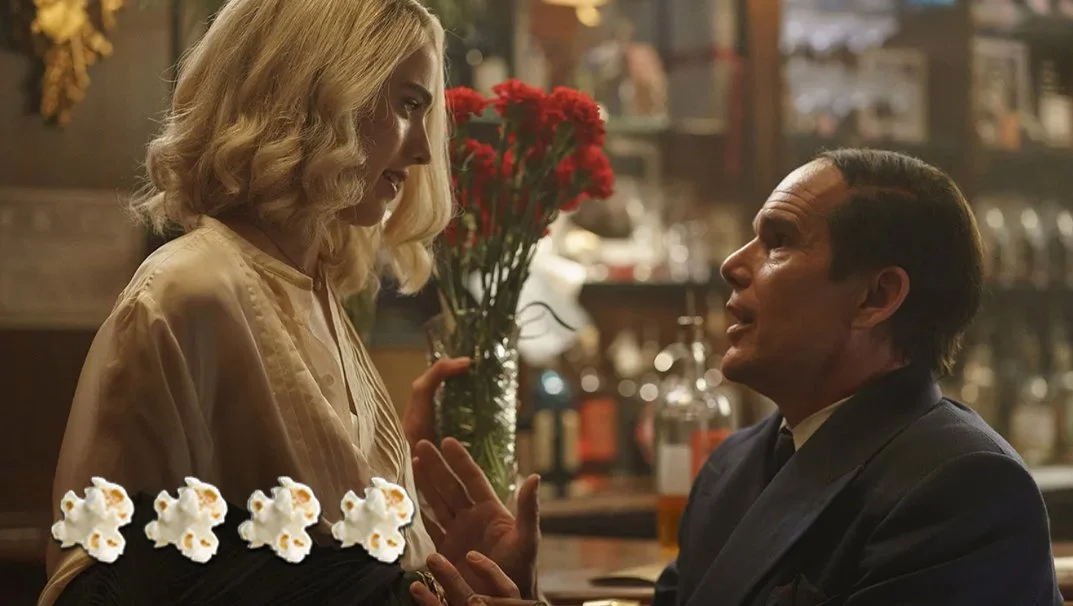Blue Moon
Sharply funny, achingly sad, Richard Linklater’s Blue Moon is a chamber piece: an intimate portrait of aging lyricist Lorenz Hart, real-life Broadway songwriter of Rogers & Hart fame, in the final act of his life and career. We follow Hart (magnetic Ethan Hawke) in real-time through a pivotal evening at Sardi’s, the well-known watering hole in the heart of NYC’s theater district. While Hart knocks back drinks, his ex-creative partner, Richard Rogers (diplomatic-but-pained Andrew Scott), celebrates a first collab with new lyricist, Oscar Hammerstein (compassionate Simon Delaney): the breakthrough musical Oklahoma!
For Hart—as per director Linklater—this is like showing up at your ex’s wedding. Hart worries his own best days are behind him and expresses this insecurity by waxing lyrical to anyone who will listen. His willing audience: bar owner Eddie (candid Bobby Canavale), writer E.B. White (sly observer Patrick Kennedy) and ingenue Elizabeth (luminous Margaret Qualley in 50’s starlet-mode). With each drink, Hart yearns harder for profound, but inches closer to profane. This culminates in the film’s most compelling segments: bittersweet tête-à-têtes with his former creative bedfellow Rogers.
Worth noting: this film is Linklater and Hawke’s ninth collaboration to date—and their synergy shines. Linklater continues his exploration of the artistic process; Hawke turns artistic angst into a tour-de-force performance. Brash, tender, heartbreakingly human, he even echoes Hart’s diminutive height (camera angles + posture + emotional bluster = 4’11”). With a sharp, Hart-worthy script penned by Robert Kaplow (the author of Me and Orson Welles, which Linklater adapted in 2008), Blue Moon—named after Hart’s own melancholic anthem—delivers an elegiac character study: an imperfect man with enormous talent who keeps getting in his own way.
On its surface, Blue Moon will appeal most to those in-the-know, but at its core lies something far more universal: the inexorable flow of time. For all its specifics of place, culture and character, this film feels supremely relatable. As Hart struggles with personal failures and lost opportunities, we grapple with our own memories and imagined futures: is it possible to seize the moment before the parade has gone by?
Laced with Linklater’s signature empathy, Blue Moon works best as a companion piece to Nouvelle Vague, the director’s second film in this year’s NYFF, and his second creative nonfiction about a real-life, difficult artist. Where Nouvelle Vague pays tribute to the glee of directing a first film, Blue Moon views the sunset of a tortured writer’s life and career. If every artist has a yin and yang, these two films may give us a clearer portrait of Linklater himself … and of ourselves.
Reviewed at NYFF 2025.
100 min.
Where to Watch: Now in theaters.


